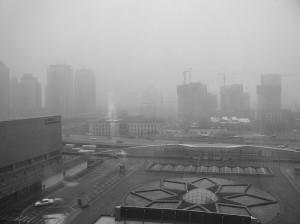
It was only a couple of years ago that @BeijingAir sent it’s now-famous tweet about Beijing having “crazy bad” air quality, but the People’s Republic of China says it’s ready to turn a new leaf. The government says it is aiming to reduce large and fine particulate matter by cutting back on coal use and high-emission vehicles such as two-stroke rickshaws.
However, this isn’t the first time China has promised a lot and delivered very little, if anything. A friend of mine living in Shanghai said that since moving there in 2011, the air quality has only deteriorated. This is despite the fact that the EPA has been working with China for years, sharing legal knowledge and expertise to improve the condition of its environment. Yet, the country is still notorious for its lax enforcement of environmental standards and pollution has emerged as a hot-button political issue.
Here’s a quick rundown of what China hopes to accomplish by 2017: reduce coal consumption to below 65 of total energy use (a decrease of 2 points); reduce fine particulate matter by 25 percent in northern provinces including Beijing, and 15 percent in southern provinces; reduce larger particulate matter (PM 10) in all other cities by 10 percent; and reduce Beijing’s average concentration of fine particulate matter (PM 2.5) to 60 micrograms per cubic meter or less. The EPA’s annual maximum for any U.S. city is 15 micrograms while the daily limit is 65, way less than what is reflected on @BeijingAir’s Twitter feed.
Reducing fine particulate matter is arguably the most important step to increase air quality. Particulate matter of 2.5 micrometers in diameter are the most deadly to humans due to the fact they can be inhaled and lodge themselves into our lungs. Interestingly, it wasn’t until the U.S. embassy began recording these levels from its rooftop that the Chinese government began releasing the data. However, even if China meets its goal, it’s still far above the World Health Organization’s exposure threshold of 24.
It might not be ideal but it’s at least a start,or so we hope.




